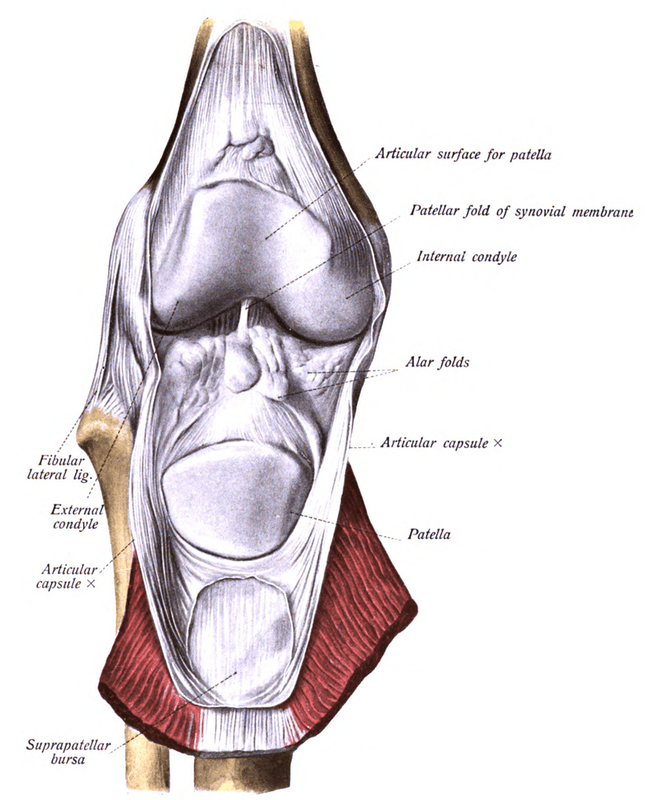CHRONIC KNEE PAIN?
SURGERY NOT USUALLY THE BEST ANSWER
 |  |
“The benefits of knee repair procedures in older adults for painful arthritic knee or torn meniscus are short-lived and “inconsequential” compared with the potential harms. Older patients who have knee pain but do not have osteoarthritis – a chronic disease of the joint cartilage and bone – should not be recommended the procedure.”Sabriya Rice from Modern Healthcare
According to the CDC’s National Center for Health Statistics, there are 719,000 total knee replacements done each year in the United States. And this doesn’t count the millions of arthroscopies (scopes) that doctors do. In light of what science has revealed over the past decade, this is way too many surgically-repaired knees. And here’s the thing; the medical community knows this but still continues these surgeries unabated. My goal is to help you halt — or at least dramatically slow down — your current knee problem before it gets to that point. It’s not like any of this is new information.
Back in September of 2008, the New England Journal of Medicine published twin studies showing the same thing —- that there are way too many knee arthroscopies taking place here in the US. The two categories that these unnecessary surgeries were taking place in? OSTEOARTHRITIS (Degenerative Arthritis) and MENISCUS TEARS. The most prestigious journal for orthopedic surgeons (Journal of Bone and Joint Surgery) followed this up in 2011 with Increase in Outpatient Knee Arthroscopy in the United States: A Comparison of National Surveys of Ambulatory Surgery…. This study showed that knee scopes in America were, “more than twofold higher than in England or Ontario, Canada, in 2006. Our study found that nearly half of the knee arthroscopic procedures were performed for meniscal tears.” And now this….
This month’s issue of the British Medical Journal (Exercise Therapy Versus arthroscopic Partial Meniscectomy for Degenerative Meniscal Tear in Middle Aged Patients) agreed. The authors started the ball rolling by saying that in the middle-aged population (average age, 49.5 — exactly my age), “most meniscal tears are degenerative and might be regarded as the first sign of osteoarthritis“. What should this statement lead you to ask? It should leave you wondering if it is possible to prevent — or even reverse — arthritis symptoms or meniscus tears. We’ll get there, but first I want to discuss a sentence found in this study.
The authors state that, “Considering the large amount of surgery performed worldwide, and the inconsequential short term additional pain relief seen from surgery in addition to exercise, randomised controlled trials are needed to explore the comparative treatment effect of partial meniscectomy alone with supervised exercise therapy alone.” Did you catch that? The pain relief from knee surgery is “inconsequential“. They backed this statement up by citing a significant number of similar studies showing that arthroscopic surgery on knees for arthritis or meniscal tears does not work well — a fact I have noted in my clinic for decades. Here is what was done in this particular study.
“In the exercise group, 61% of participants completed the exercise therapy program (25 sessions on average) with satisfactory or excellent compliance. 19% in the exercise group crossed over to receive surgical treatment between three and 16 months. Of these, approximately half had completed at least 19 exercise sessions. Owing to persistent knee pain and catching of the knee 3% in the meniscectomy group were reoperated on, and one participant who had crossed over underwent another operation six months after the primary operation.”
The surgical group underwent PHYSICAL THERAPY but not a strengthening protocol per se. Thus, when comparing groups of people who received knee scopes to those who underwent strengthening protocols only, we saw that, “No clinically relevant difference was found between the two groups at two years.Exercise therapy showed positive effects over surgery in improving thigh muscle strength, at least in the short term. Our results should encourage clinicians and middle aged patients with degenerative meniscal tear and no definitive radiographic evidence of osteoarthritis to consider supervised exercise therapy as a treatment option.“
But make no mistake about it, it wasn’t all champagne and roses for either group of participants in this study — surgical or strengthening alone. Here’s the proof that you are better off preventing arthritis that trying to do something about it after the fact.
“From baseline to the two year follow-up, 23% of the participants in each group experienced pain, swelling, instability, stiffness, or decreased range of motion in the index knee that was serious enough to seek consultation. Similar symptoms in the opposite knee were experienced by 21% of participants in the exercise group and 14% in the meniscectomy group.”
This is an important study because it shows yet again that exercise is virtually indistinguishable from arthrosocpy for the two most common knee problems. Why is this such a big deal to grasp? Firstly, because we know that the incidence of KNEE PROBLEMS is literally exploding here in America (HERE). And secondly, STUDIES HAVE REVEALED that if you have your knee scoped (even if there is no surgery done), your chances of developing arthritis skyrocket after only one year. Fortunately for most of you with knee problems / pain, there’s a better solution.
Are you interested in getting your knee(s) better without dangerous or invasive procedures or products? There are large numbers of practitioners of all sorts who are selling knee pain relief with huge up-front case fees. Want to hear something really cool? Most of you can do these protocols on your own. The doubly cool thing is that it won’t really cost you anything other than some time, energy, and effort. Follow the blueprint found in THIS POST to see how most of you can solve your own knee pain. Always remember; not making changes until they are forced to is the typical way that the practice of medicine works, and why the “BEST EVIDENCE” is either not followed or anything but.
